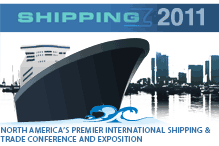
Eagle Bulk Shipping – All About the Arbitrage
By Matt McCleery
It’s all about the arbitrage these days.
What we mean by this, of course, is the fact that ships have a higher value on Wall Street than they do in the shipping markets – and not surprisingly there is a steady stream of people looking to capture the difference.
It depends on the age of the vessels, of course, but on average a shipowner can buy a middle-aged vessel at about four times cash flow and sell it to Wall Street investors for about six times cash flow – much more if the company is valued based on its dividend yield.
Here’s where the rubber meets the road: by valuing shipping companies using a multiple of their cash flow generation, issuers of equity can effectively sell their vessels for 1.5-2.0x their value in the sale and purchase market. It is a truly remarkable moment in the evolution of shipping and the capital markets – and not surprisingly the Delta flight between Athens and New York is once again being seen as a direct journey to wealth and early retirement for shipping dealmakers. Continue Reading
Blank Check Stock Offerings
By Glen T. Oxton and Antonios C. Backos, Healy & Baillie, LLP
Blank check offerings of securities in the U.S. public capital markets have been around for some time, but in the past such offerings were primarily associated with small offerings of $5 million or less. Today they are being used in much more sophisticated offerings for hundreds of millions of dollars in many diverse industries – in addition to shipping – such as metals, mining, media and entertainment.
Last December, International Shipping Enterprises, Inc. (“ISE”) concluded an initial public offering of securities in the United States as a blank check company. The deal created great interest in the shipping community because of its size. It successfully raised approximately $182 million after expenses, of which JPMorgan Chase Bank currently holds approximately $180 million in a trust account awaiting the completion of a business combination.
What Is a Blank Check Offering? Continue Reading
Best Practices Part II: Personnel & Compensation
In the previous pages we have heard from a cross-section of bankers about their firms’ strategies, risk tolerance and portfolio profiles. But, as we all know, all the careful strategies and bright ideas cannot go very far without the right people to develop and implement these ideas.
So what sort of employee structure does a successful shipping bank have? How does such a bank compensate its employees? This part of the study can help you to benchmark your own strategies while gauging those of your competition.
Offices, Bankers, Support & Bonuses
With shipping business spread the way it is across far-flung parts of the globe, we thought it would be important to see how many offices banks operate globally. Numbers were reasonable overall, with an average of 3.43 offices, a median of three offices, and a mode of just one. Continue Reading
Adventures in Capitalism
By Matt McCleery
On January 18th, 2005, a special purpose acquisition company called Trinity Partners Acquisition Company Inc. issued a press release saying that it had signed a Letter of Intent for a business combination with Adventure Holdings. Then, in late March, the two companies announced that they had entered into a Definitive Agreement. The lawyers are likely hard at work on the proxy statement, which will be submitted to the SEC, voted on by shareholders, and ideally approved sometime this summer.
For those who don’t know the company, Adventure Holdings was set up as a holding company of shipowning entities and is owned by brothers George and Stathis Gourdomichalis (using an entity called “G Bros”) and their partner Ion Varouxakis (using an entity called “V Capital”). Trinity Partners is an acquisition company that did its IPO in August of 2004 through Brenner Securities and is listed on the NASDAQ bulletin board, where it trades under the symbol (OTCBB: TPQCA). Poseidon Capital in New York brought the parties together and is advising Adventure Holdings on the transaction. Continue Reading







